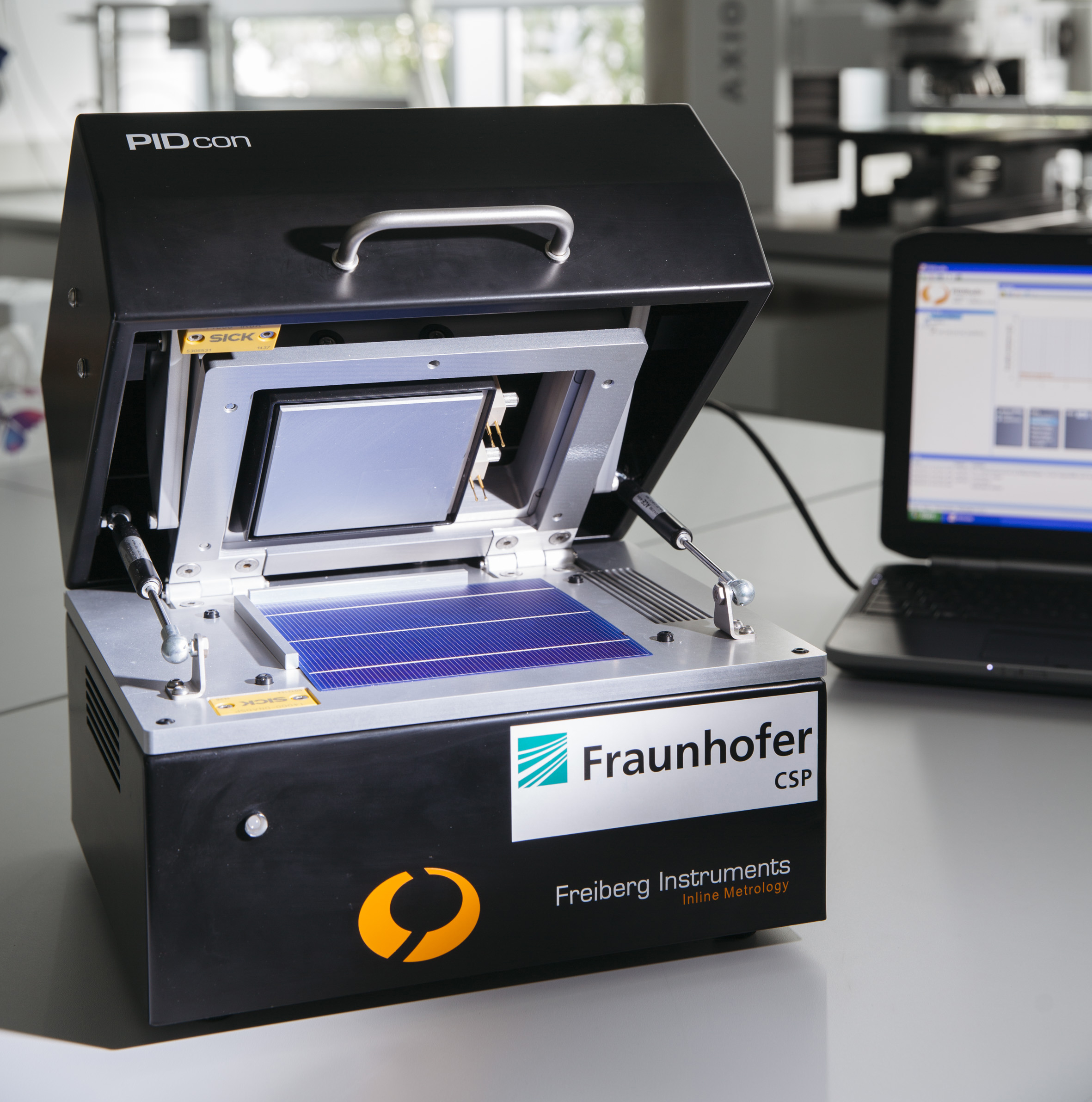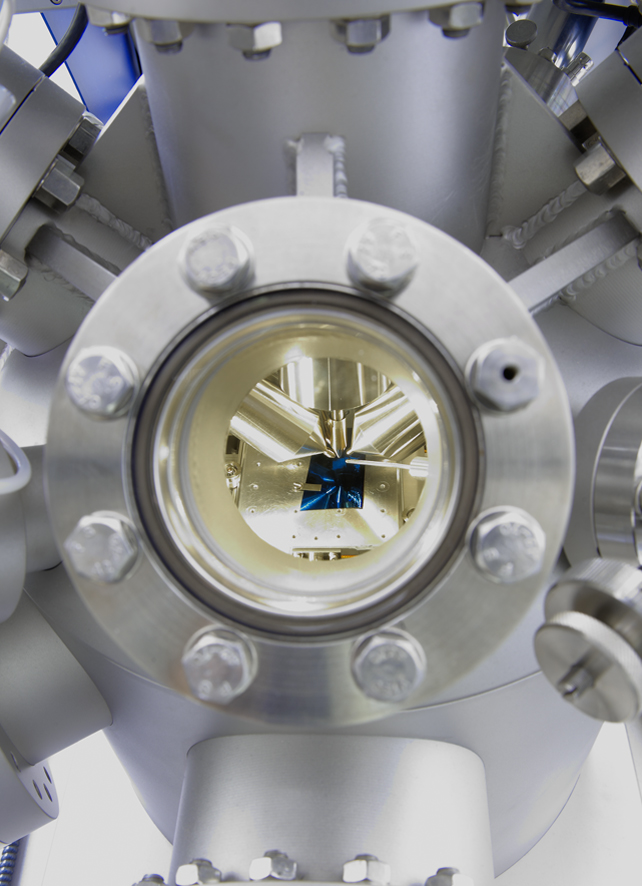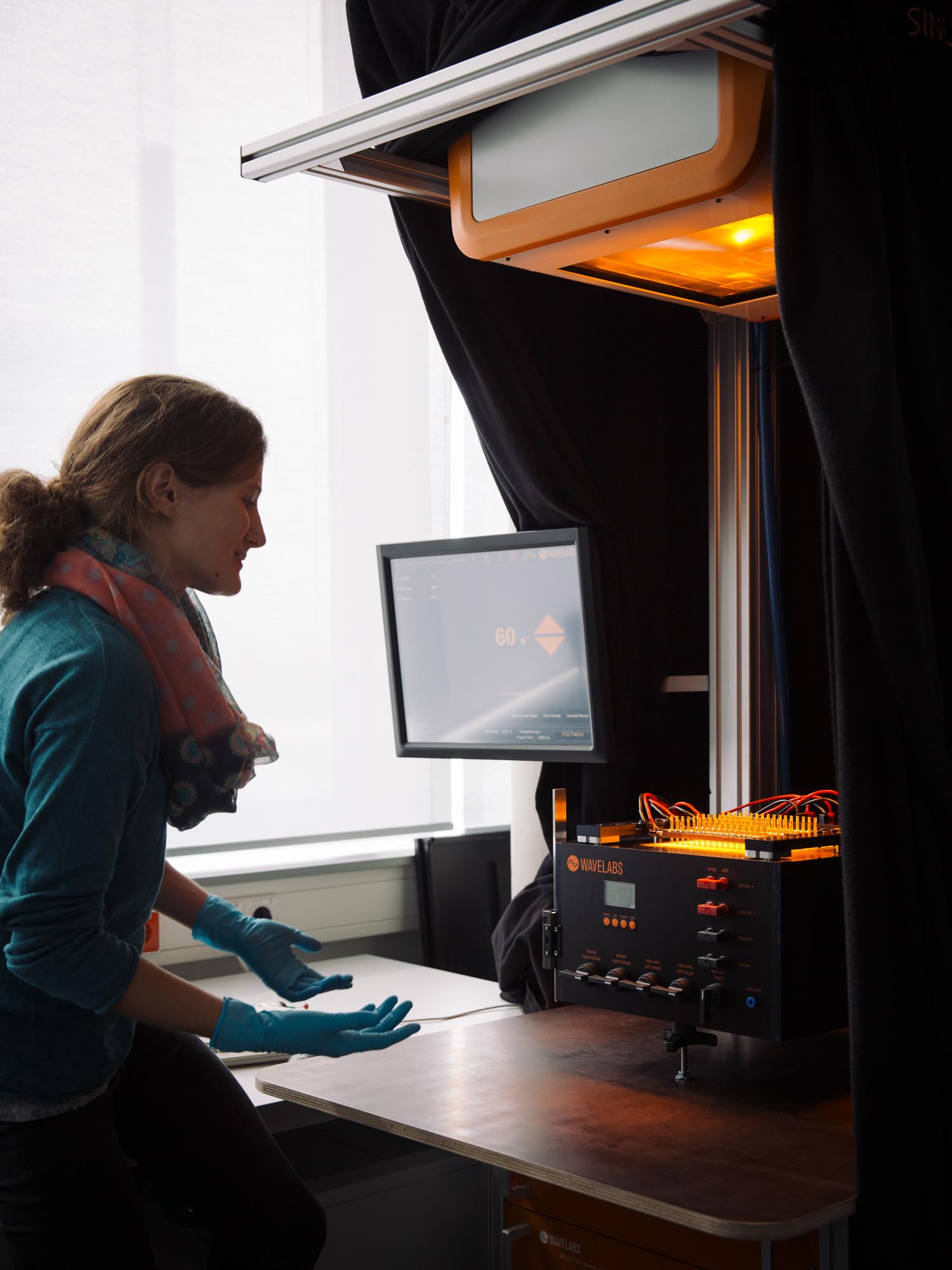Performance, reliability and cost efficiency are the decisive characteristics of a perfect solar cell. The »Diagnostics of Solar Cell« group is working on these issues, supported by industrial sponsors and partners in research and development. The teams »Electric Characterization«, »c-Si Defect Diagnostics« and »Thin-film Characterization« set the standards for quality assurance and failure analysis in photovoltaics. To this end, a broad spectrum of material-scientific methods are available – ranging from trace element analytics over quantum efficiency all the way to atomic microstructure diagnostics.
Research activities span from the characterization of the crystalline solar silicon to the microstructure-based failure diagnostics for the thin-film photovoltaic industry. In addition, new layer systems and laser structuring methods are being developed for the next generation of solar cells.
We offer:
- Rapid testing tools for module defects such as PID
- Electric characterization of solar cell, wafers and blocks
- Microstructure diagnostics on crystalline solar cells
 Fraunhofer Center for Silicon Photovoltaics CSP
Fraunhofer Center for Silicon Photovoltaics CSP



